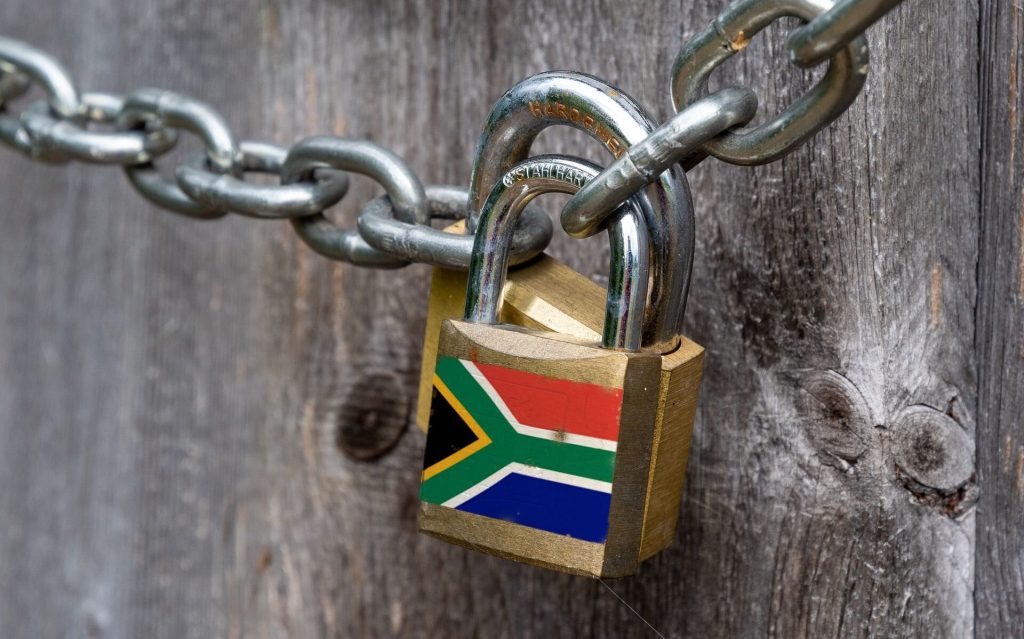
As falling infection rates are beginning to indicate the end of the fifth wave, a paper in the South African Journal of Sciences asks the question – how was it ever feasible for marginalised South Africans to be able to engage in social distancing?
According to a recent seroprevalence study, the vast majority of people in South Africa now have antibodies against COVID in their blood, many acquired through infection and not immunity. The editorial review by Professors Jonathan Jansen and Shabir Madhi, at Stellenbosch University and Wits University, explores the realities of the majority of the population as they struggled under the lockdown.
Just over two years ago, SA garnered praise for instituting one of the harshest lockdowns in the world. In late 2021, while the world panicked over emergence of the Omicron variant, SA led the way with a sharp change in thinking: there was no way now to practically contain COVID with social distancing measures, so it was best to return to as close to normal as possible. This came with an admission that lockdown in SA had failed, and was it doomed from the start with its structural inequalities. SA’s lauded lockdown came with the grotesque spectacle of soldiers forcing people back into their shacks, after all.
Jansen and Madhi considered that a joint UK–SA study found that difficulty adhering to lockdowns or outright noncompliance was largely reported by black Africans in temporary housing. Such conditions entailed lack of savings and access to basic amenities such as private toilets, making lockdown adherence virtually impossible.
Jansen and Madhi observed that inequities were readily apparent, with in-hospital COVID mortality rates being 1.2- to 1.3-fold higher in black African patients, coloured patients and patients of Indian descent compared to white patients. Patients were also 1.5 times more likely to die in public healthcare as opposed to private healthcare, with greater likelihood of ICU admission and mechanical ventilation.
Looking at the impact of gender, voices of experts were mostly (70%) male, Jansen and Madhi noted, and researchers found that COVID had disproportionate impacts on female academics.
The pandemic also brought the ethical question of vaccine mandates, where it was argued that it was permissible for the greater good. But there was a stumbling block of how would consent for enrolment be gained? The SISONKE trial showed that, even among healthcare professionals, informed consent was a problem. Most (71.5%) participated for access to the vaccine, but nearly a third (32%) did not realise that breakthrough infections and adverse events had to be reported two years on.
“Despite the numerous lockdowns and restrictions in South Africa,
the benefits thereof are questionable.”
Overall, studies challenged the benefit of the lockdown. Jansen and Madhi argue that, “Despite the numerous lockdowns and restrictions in South Africa, the benefits thereof are questionable.” Even before the Omicron wave, 73% of South Africans were estimated to have been infected at least once.
SA nevertheless was able to leverage its skills and resources to enter into COVID vaccine manufacture and knowledge sharing, but sustainability ultimately depends on commitment to vaccine programmes in Africa.
Jansen and Madhi stress that the economic costs of the lockdown are ongoing, an by 2021 only 42% of the working population remained employed in SA. Modelling shows that employment might only return to 2018 levels by around 2024 to 2026.
“Consequently, the full societal impact of the COVID-19 pandemic is yet to materialise; and imposing and retaining ongoing regulations under the pretence of trying to prevent SARS-CoV-2 infections, when all indications are that they have failed dismally in the South African context, warrant immediate abandonment.”


One Reply to “Social Distancing in a Shack: Lessons of the Pandemic for SA”
Comments are closed.